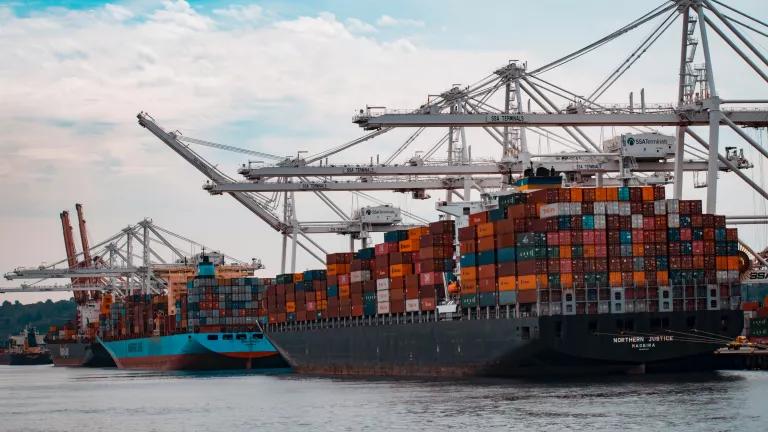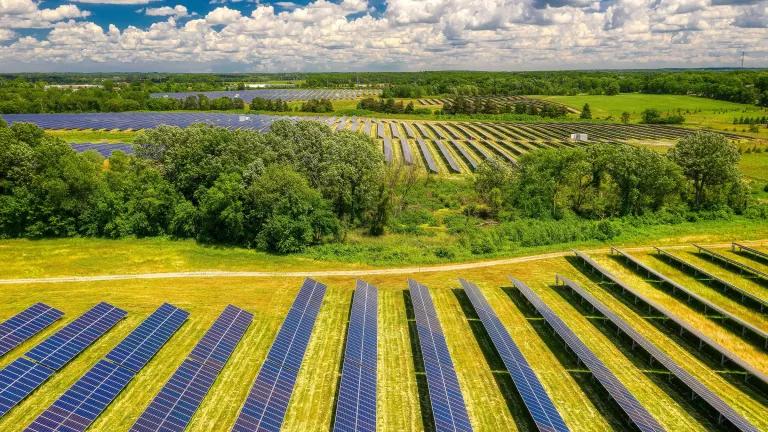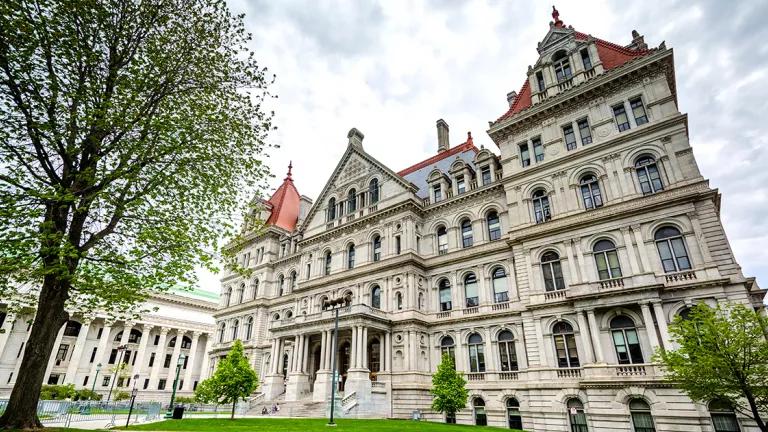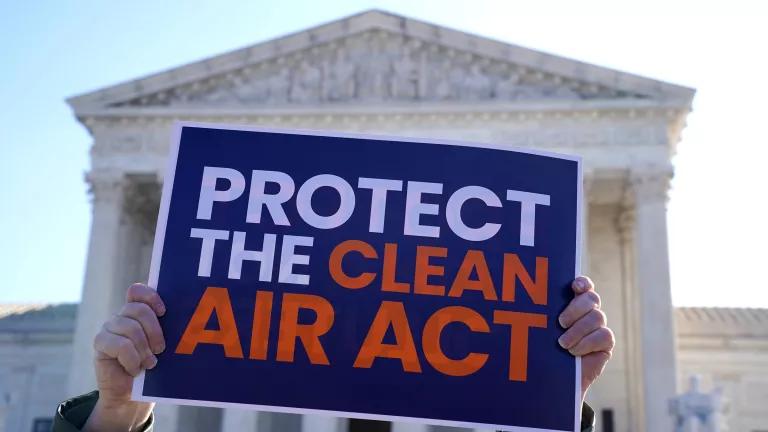Solving Supply Chain Issues Must Center Health and Workers
Now more than ever, governments must lean into labor laws that protect workers and environmental standards that accelerate the transition to zero-emission freight movement, all to help untangle supply chains and mitigate pollution.
A new fixture of the post-COVID-19 era is images of ships clogging ports and idling truck lines set against a backdrop of cargo stacks and inbox delay notifications. Ports from California to Georgia are feeling the squeeze. Moving into the holiday buying season, freight bottlenecks are expected to worsen.
Choked global supply chains create economic headwinds and wreak havoc on local air quality. Now more than ever, governments must lean into labor laws that protect workers and environmental standards that accelerate the transition to zero-emission freight movement, all to help untangle supply chains and mitigate pollution. For states, this includes adopting California’s medium- and heavy-duty vehicle emission standards, maintaining strong labor standards, supporting high road job creation, and pursuing environmental justice policies.
To understand why labor and environmental laws are vital, let’s explore what’s causing the congestion and its environmental impact.
Demand: Changing Consumer Behavior
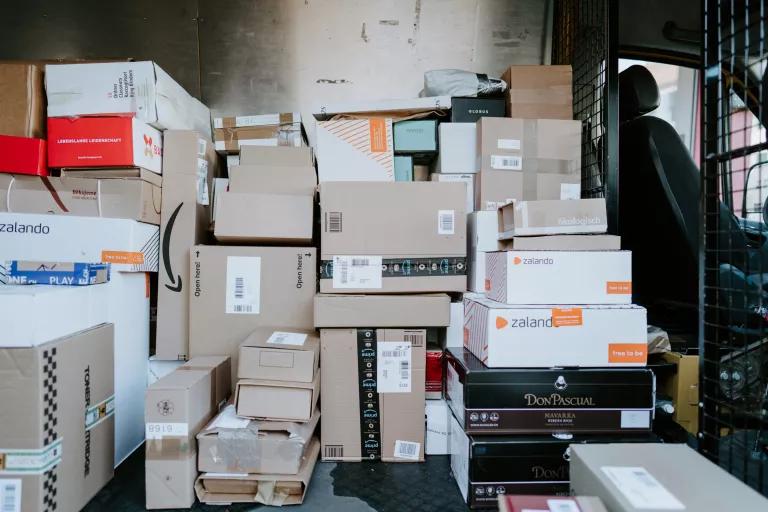
Photo by Claudio Schwarz on Unsplash
Much how COVID-19 disrupted daily lives, it had a profound effect on consumer demand. With stores closed and people staying home, consumer spending shifted from services such as new haircuts or restaurant dinners towards online shopping for goods like exercise equipment. The pandemic also encouraged older consumers to adopt e-commerce, instilling new buying habits. Stimulus payments, savings amassed during lockdown, and strong but uneven economic growth further increased consumer spending on goods.
Supply: Closed Factories and Constrained Output
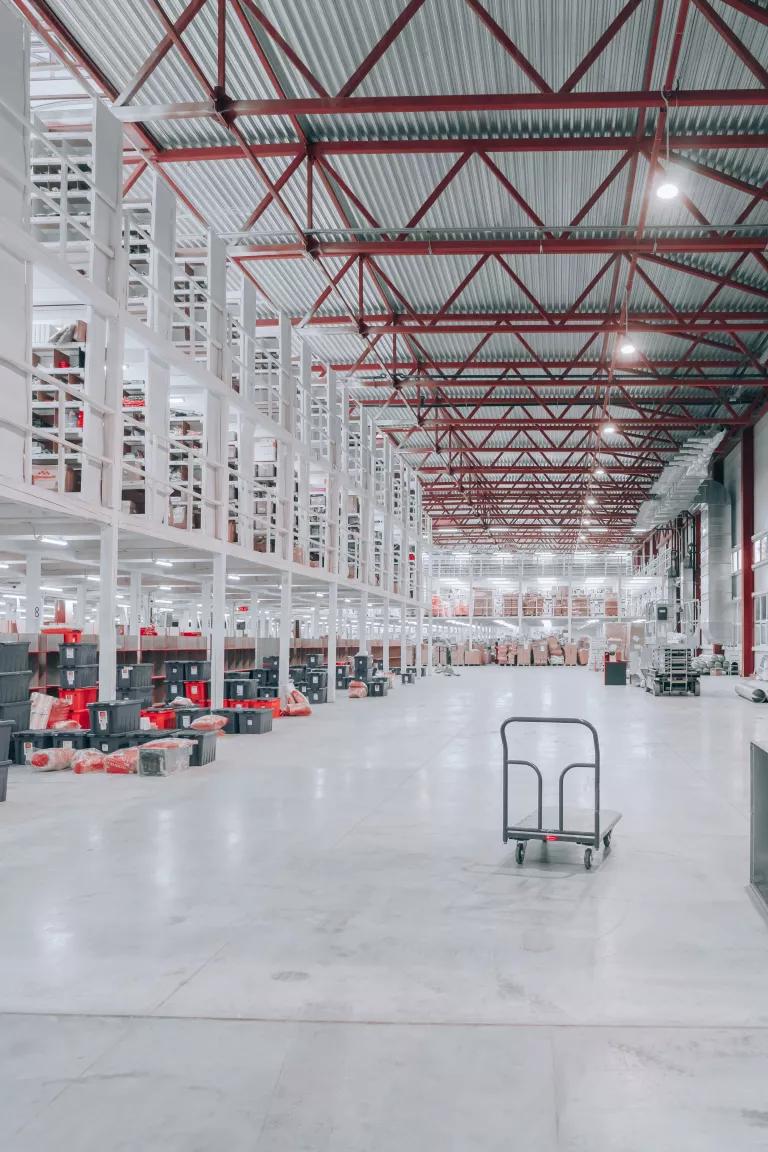
Photo by Jake Nebov on Unsplash
But growing demand ran into the reality of a pandemic. Overseas factories, limited by worker sickness and government quarantines, suffered from reduced output. Factories throughout China, particularly in Wuhan, were hit hard by closures in the early days of the pandemic. More recently, Vietnam, the second-largest exporter of apparel to the U.S., was ravaged by the Delta variant causing the government to issue social distancing measures leading to factory limitations or closures.
Transportation: Bottlenecks Beget Bottlenecks
Early in the pandemic, shipping containers brimming with protective equipment manufactured in China ended up in countries that aren’t typical trading partners. Once unloaded, these containers didn’t have a cost-effective way to return, often becoming stranded and contributing to a shipping container shortage in China. On top of that, Yantian Port in Shenzhen, China, had to contend with a partial closure due to a COVID-19 outbreak in the city. Consequently, factories dependent on Chinese-made parts were forced to wait and/or limit production.
Long wait times for Asian-made products translated into skyrocketing prices for moving goods out. As a result, shipping carriers increasingly unloaded in California and hurried back to Asia with empty containers to fill up, leaving American exports delayed or stranded.
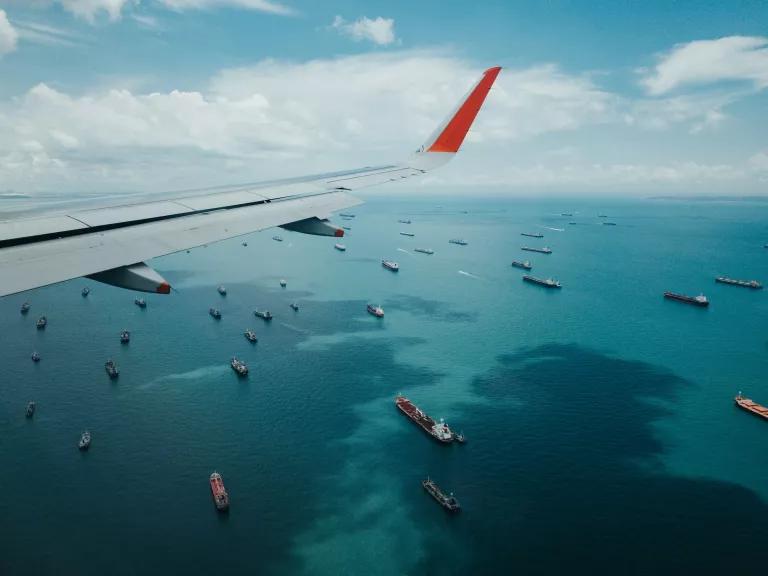
Photo by @shawnanggg on Unsplash
Meanwhile, because of travel restrictions, U.S. air travel dropped almost 100 percent year-on-year. Importantly, passenger jet holds are used to move cargo, but with less air travel, fewer cargo slots are available, pushing freight towards land and water modes of transportation.
All of these disruptions slowed freight movement, at times creating shortages or the perception of shortages. In turn, this caused U.S. manufacturers and retailers to stockpile goods, leading to packed warehouses with limited spare capacity. Thus, when cargo could offload at ports, there wasn’t always an immediate storage destination creating large stacks onsite and in neighboring communities. Skyscrapers made of containers are harder to sift through, so arriving trucks wait longer to receive their load.

Photo by Guillaume Bolduc on Unsplash
Labor: Working Through a Pandemic

Photo by Mitchell Luo on Unsplash
In the best of times, being a driver is a difficult job, especially for long-haul truckers. Poor benefits and compensation, exploitative labor practices, health risks, and time apart from families contributed to a driver retention problem that plagued the industry prior to the pandemic. COVID-19 exacerbated this issue by leading drivers to quit or miss work due to sickness, quarantine, and/or childcare. Strong labor laws, such as those addressing predatory business practices like misclassifying workers as independent contractors to avoid providing benefits and preventing drivers from exercising their rights as employees and receiving employee protections, would go a long way towards helping attract and retain drivers.
Fewer drivers on the road created additional delays by making it harder to move containers out of ports, railyards, and warehouses. On top of that, fossil fuel vehicles, unlike clean electric vehicles, require frequent maintenance. Removing a truck from operation for maintenance—normally a nuisance—has an outsized impact when supply chains are stressed.
Clogged Supply Chains Harm Communities
The San Pedro Bay Ports, the largest port complex in the U.S. presiding over roughly 40 percent of goods that enter the U.S. by sea, experienced blockbuster growth in 2021. But record-breaking volume means more trucks, ships, trains, and equipment spewing diesel pollution into nearby neighborhoods.

Photo by Chris LeBoutillier on Unsplash
Off the coast, a record number of ships sit idling their engines, including days with over 100 cargo ships at-anchor. According to the San Pedro Bay Ports’ emissions inventories, a dramatic pollution spike occurred in December 2019, and above-average emissions are likely to persist through 2021. These emissions directly harm public health. Results from a California Air Resources Board study indicate that at-anchor ship emissions contribute to severe health impacts, premature deaths, hospitalizations, and emergency room visits. As the crisis worsened with even more ships at-anchor, these impacts have likely worsened.
A tragic intensifying is occurring. Simultaneously, the Ports’ surrounding neighborhoods are some of the hardest hit by the pandemic. Neighborhoods in Los Angeles county with the worst air pollution, such as those adjacent to the Ports and freight corridors, have suffered significantly higher rates of hospitalization and death due to COVID-19. Transitioning from a fossil fuel-based freight system to zero-emission solutions such as electric trucks is vital.
Addressing the Supply Chain Crisis Must Help Communities
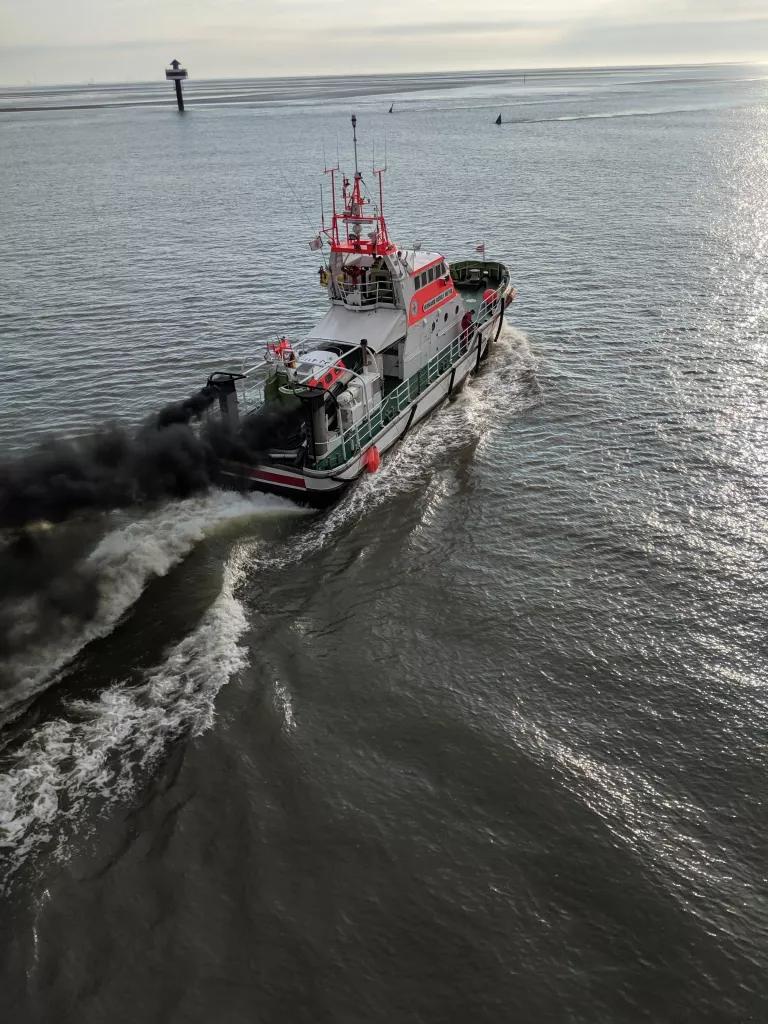
Photo by Georg Eiermann on Unsplash
The stakes have never been higher, yet actions that exacerbate the harm to freight impacted communities aren’t being met with comparable relief. For example, in the last few weeks, the San Pedro Bay Ports, backed by the Biden Administration, announced plans to shift to 24/7 operations. This threatens to inundate communities with 24/7 pollution, noise, vibration, light, public health, and safety impacts. Moreover, expanding port operations alone is unlikely to alleviate supply chain bottlenecks—the containers have to go somewhere.
These policies are overly focused on congestion and continue to put communities of color and low-income communities in the sacrifice zone, exacerbating asthma and cancer rates, COVID-19, and premature death for those living near freight hubs and corridors.
Time to Accelerate Environmental and Labor Protections
Extreme actions that undermine environmental and labor protections will harm workers and frontline communities and could exacerbate aspects of the supply chain problem, such as driver shortages. Our elected officials, regulators, and the ports must prioritize addressing the public health crisis and double down on reducing pollution and providing worker protection. In California, this includes adopting a strong Advanced Clean Fleets rule, defending indirect source rules for freight facilities, elevating training programs for high road job creation, and maintaining robust labor protections and thorough CEQA processes for all freight projects. Collectively these actions can help mitigate public health impacts while encouraging the sustainable development of the workforce needed to help ease elements of our congested supply chain.
